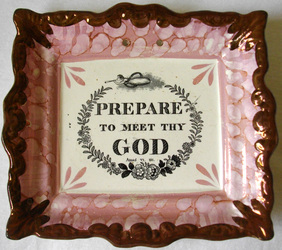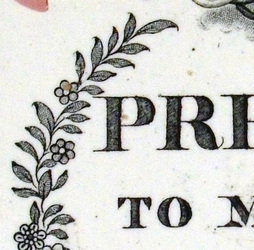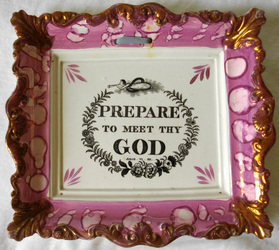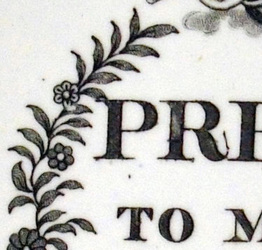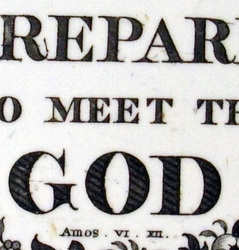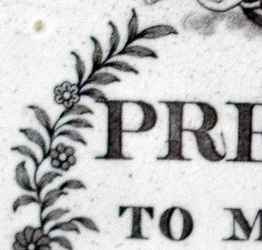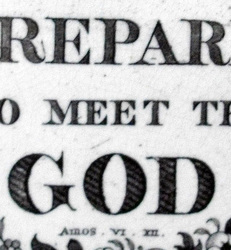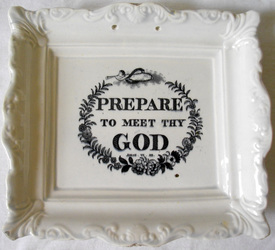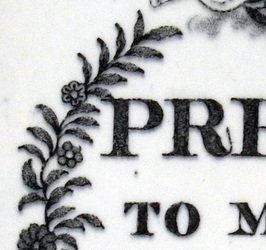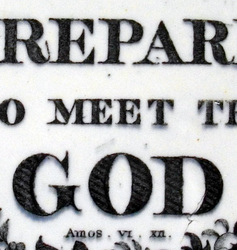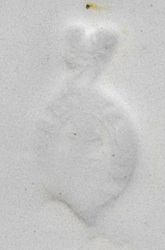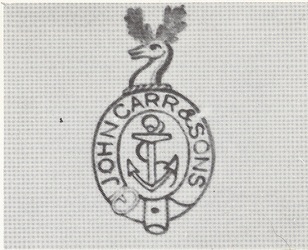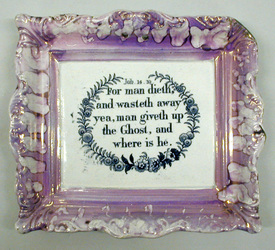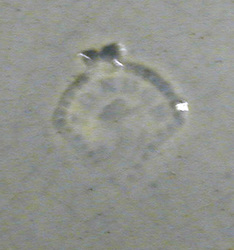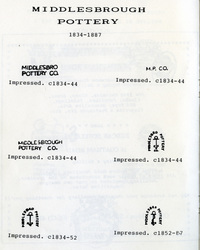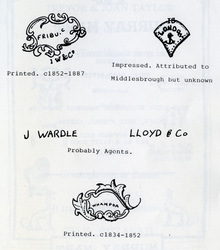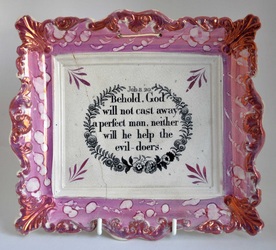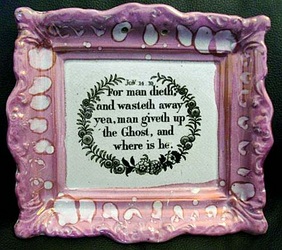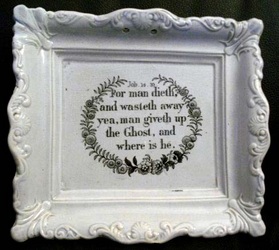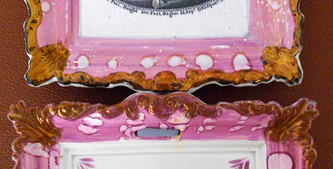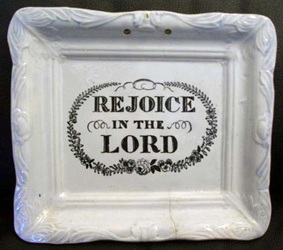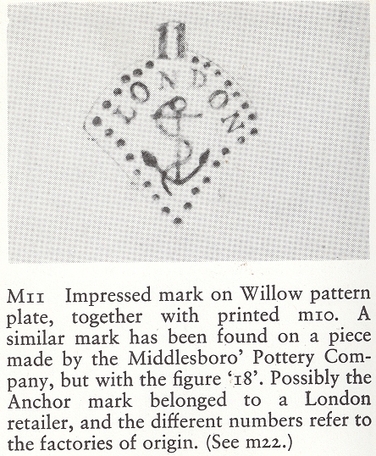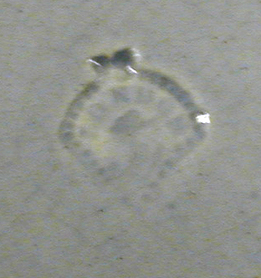|
Here's another instalment of 'Prepare' plaques with the angel facing left. First is a Dixon plaque for comparison (read about the features of the Dixon transfer in my previous post). The three plaques beneath it all come from the same non-Dixon transfer plate. (Thanks to Ian Holmes for sending me the photos.) The obvious difference is that the word 'God' is diagonally shaded in the opposite direction. The leaves on the sprig are longer and curve out more than on the Dixon transfer. However, this second transfer has copied the Dixon mistranscription of the verse as 'Amos VI. XII.' (It should read 'Amos IV. XII.'.) The non-Dixon transfer has some easily identifiable flaws. There is a small dot just beneath the letter 'P' (click on the images to enlarge), which reproduces on all three plaques. The engraver appears to have slipped while drawing the serif on the first letter 'R', which lurches upwards. The last two plaques share some additional flaws (implying they were made later), e.g. a dot below the second letter 'P', a dot just above the gap between the letters 'O' and 'D', and a small dash inside the letter 'A'. The first impressed mark below is on the reverse of the all-white plaque above. The illustration of how a clear imprint might look is from R C Bell's book on Tyneside Pottery. Bell says it was used by John Carr & Sons from 1861 onwards. But the pink lustre plaques above are older than that. The style of this 'prepare' transfer, with elongated leaves, is very similar to the 'For man dieth' transfer on the plaque below in the York Museums' collection. It has an impressed mark (below right) with the Middlesbrough anchor and the word 'London'. Clarice Blakey, in Northern Ceramic Society newsletter 210, suggests that the London mark was used at Middlesbrough between 1834–52. N.B. 'London' marks appear on items made in the North East, presumably destined for a London distributer. (Click here to read more about the use of the London mark.) The scans below are from P.J. Duce's booklet "A Guide to Teesside Pottery Marks". Note the 'London' mark top right. So perhaps the earlier pink lustre plaques are Middlesbrough, and at some point the transfer plates moved to John Carr's pottery in North Shields. The plaque photos below might support that. The first three show that the longer verses ('Behold God' and 'For man dieth'), like that on the York Museums' plaque, appear on all of the plaque forms shown above. The first plaque form is distinctive because it is unusually large in size (see the image below it, provided by Ian Holmes, which shows its comparative size to a bridge plaque attributed to Scott). The final plaque has a typical Carr shape and transfer from the 1860s, and is again undecorated. Unfortunately, plaques with 'London' and 'John Carr & Sons' impressed marks are exceptionally rare. Louise Harrison at the Dorman Museum in Middlesbrough writes 'A private collector who has done a lot of research on Middlesbrough marks told me that the “London” mark was used on pots made at both the Middlesbrough Pottery and at a number of potteries on Tyneside. The link between all these potteries is a man named Isaac Bell, who was at Middlesbrough c1838-1840 and on Tyneside from 1842 to the mid 1860s.' John Carr & Sons was one of the Tyneside potteries that used a 'London' impressed mark. If the Middlesbrough impressed plaque was made before 1840, and the Carr impressed plaque after 1860, what happened in between? The Dorman Museum has no record of the Middlesbrough Pottery producing lustre items. And note, the London mark above in Duce's guide is only 'attributed' to Middlesbrough. So more research needs to be done to firm up the Middlesbrough attribution. If you can fill in any gaps, please get in touch. P.S.R C Bell in his book on Tyneside Pottery also identifies the London mark with anchor as belonging to Middlesbrough (see below). He suggests that although this mark might have been used by other potteries, that the number 18 is specific to Middlesbrough. I've reproduced the impressed mark on the Middlesbrough-attributed plaque beneath it, which clearly has a number 18. P.P.S.And where else would we expect the above 'Prepare' transfer plate to end up other than Ball's Deptford pottery? For a similar Ball's-attributed example see plate XVI, p30, Baker. Note the long serif on the 'R' and the dot under the 'P'.
0 Comments
Leave a Reply. |
AuthorStephen Smith lives in London, and is always happy to hear from other collectors. If you have an interesting collection of plaques, and are based in the UK, he will photograph them for you. Free advice given regarding selling and dispersal of a collection, or to those wishing to start one. Just get in touch... Archives
February 2022
AcknowledgementsThis website is indebted to collectors, dealers and enthusiasts who have shared their knowledge or photos. In particular: Ian Holmes, Stephen Duckworth, Dick Henrywood, Norman Lowe, Keith Lovell, Donald H Ryan, Harold Crowder, Jack and Joyce Cockerill, Myrna Schkolne, Elinor Penna, Ian Sharp, Shauna Gregg at the Sunderland Museum, Keith Bell, Martyn Edgell, and Liz Denton.
|
